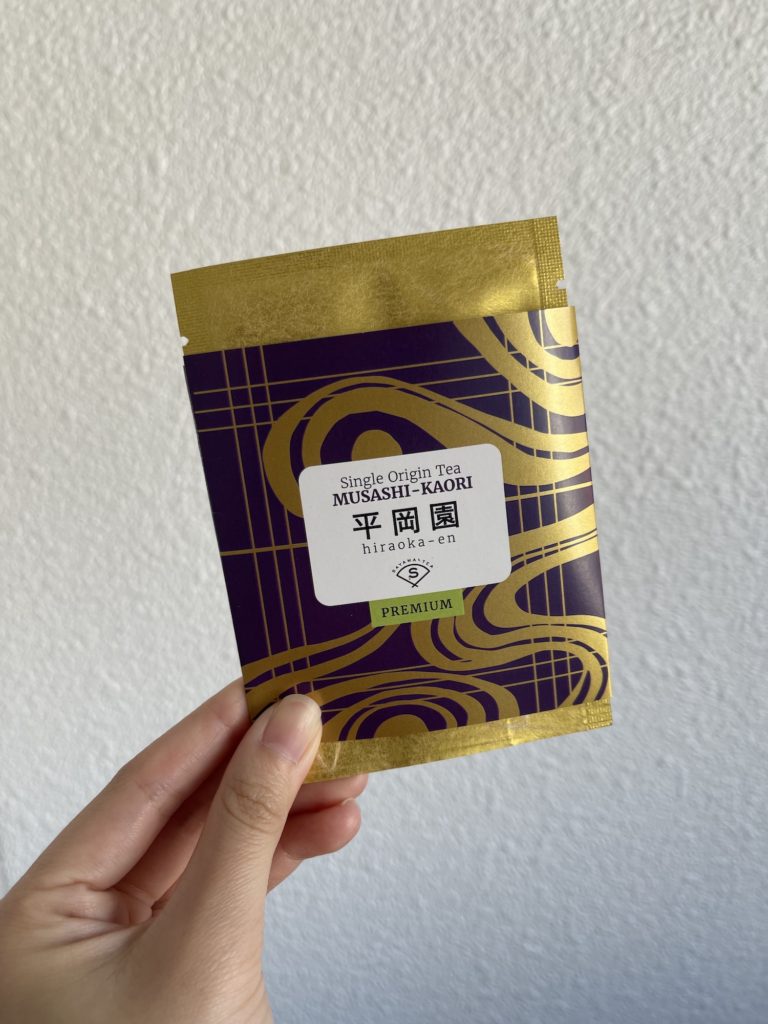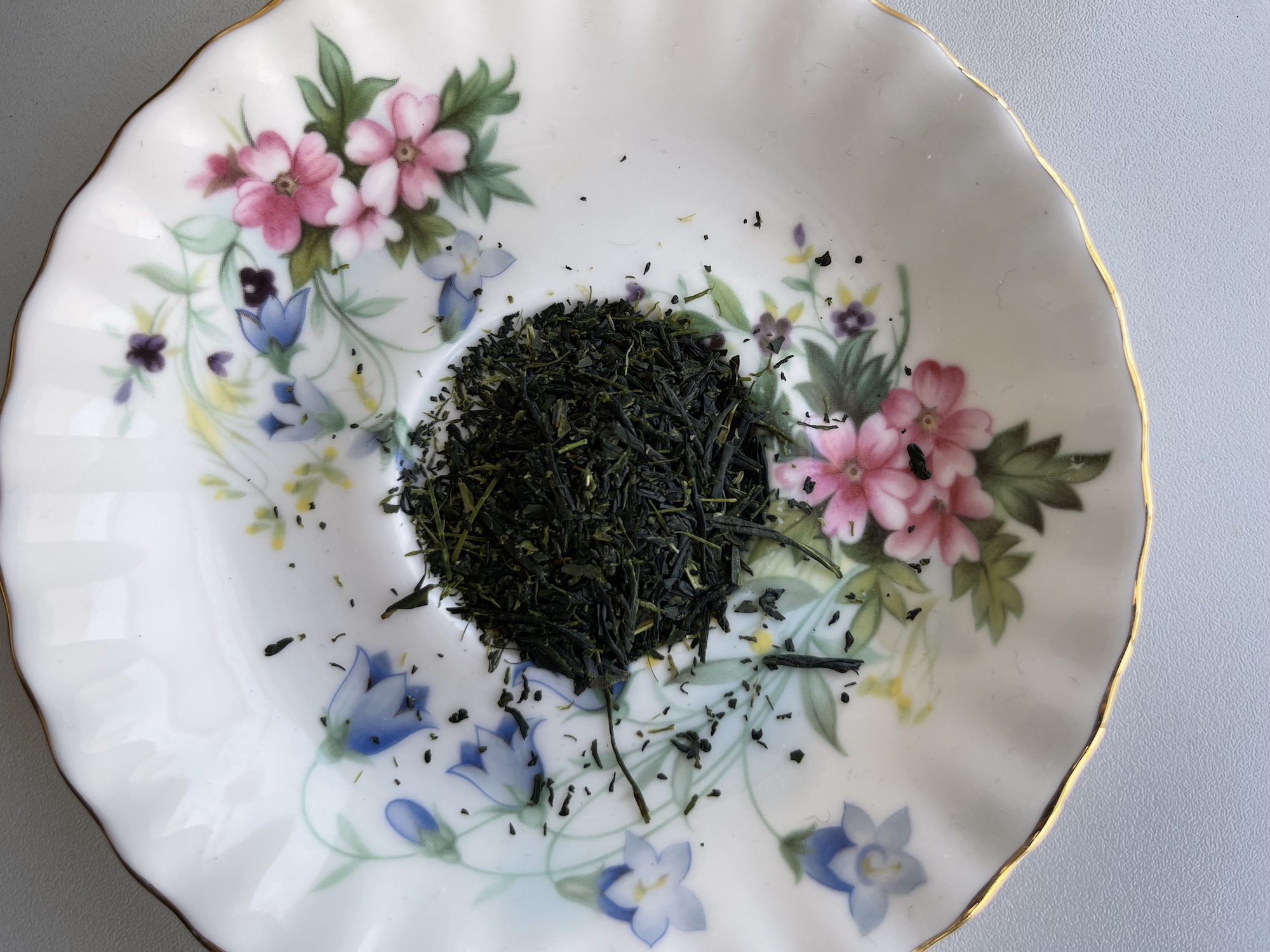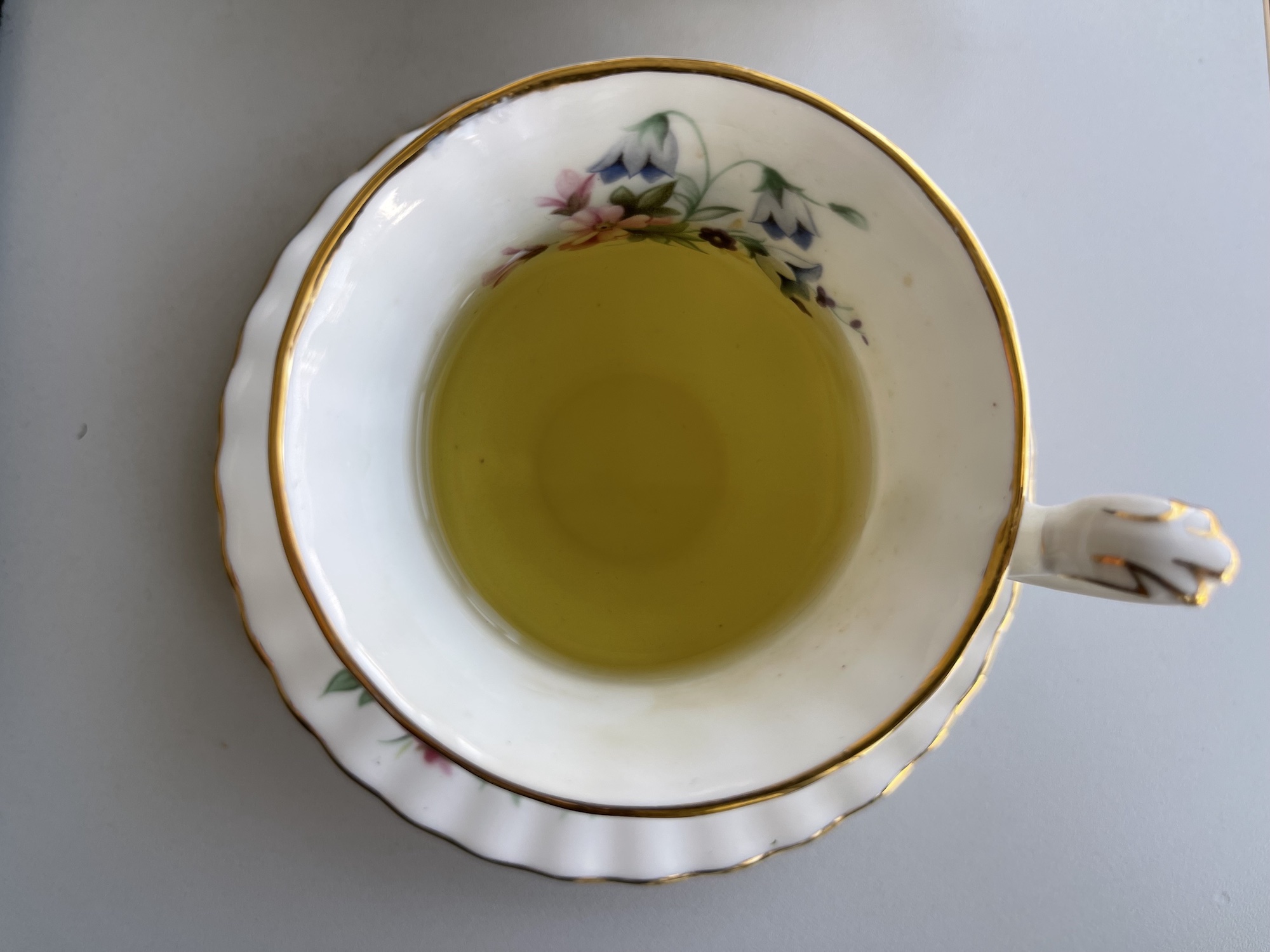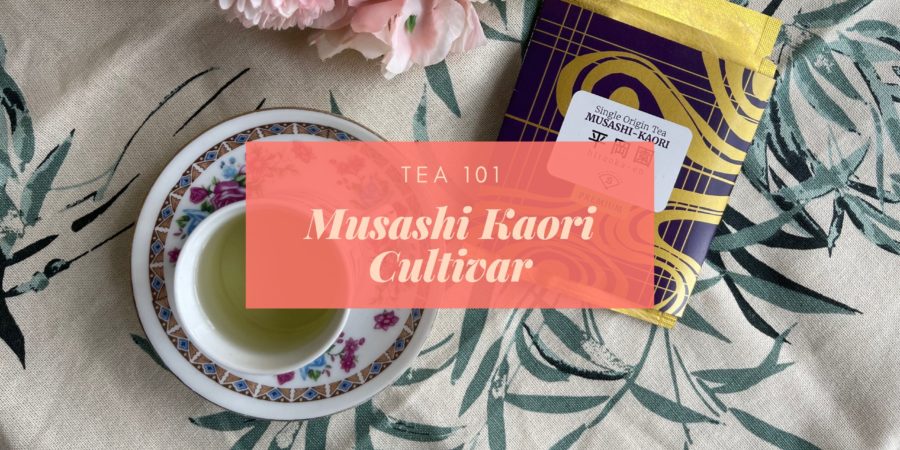It has been almost a month since my last Tea 101 post, so we are long overdue for this look into Musashi Kaori!
What is the Musashi Kaori cultivar?

Created in 1967 as a cross between the yabukita and the intriguingly labelled “27F1-73”, the Musashi Kaori is distinguished by its refreshing scent and umami note. After its creation in 1967, the plant spent 6 years (1990 to 1996) being tested for its nutritional components, resistance to diseases, etc under the label “Saitama 33”. And of course, the plant passed all its tests and was finally registered under the name “Musashi Kaori” in 1997!
The name is pretty cool too, it references the tradition of excellent fragrances that the Musashi province (now Tokyo, most of Saitama prefecture and part of Kanagawa prefecture) – hence “Musashi” (province) + “Kaori” (fragrance).
The plant itself is resistant to the cold and disease, with better resistance to wilt and 裂傷型凍害 (translated: laceration type frost damage) than the yabukita, and slightly better resistance to anthrax and ring spot disease (輪斑病) than the yabukita cultivar.
When we look at harvest timing, the Musashi Kaori is considered a late harvest tea, with the first flush ready 2 to 3 days after the Yabukita in cold regions and 3 to 6 days after Yabukita in warm regions. It’s interesting to see how the harvest time for Musashi Kaori can be so much later than the Yabukita based on where the tea is grown! As for volume, this tea produces slightly more than the Yabukita cultivar.
Tasting Notes
Now, time for the fun part of the post – what this tea tastes like (to me)!


The dry leaves had a soft smell with a slight tang from an umami note. The first steep produced a tea liquor that was very well-balanced; the tea was soft and sweet with an umami note that melded into the other flavours rather than fighting for dominance. I also got a grassy note, but my overall impression of the tea was that all the flavours worked together, which makes me trying to isolate the various flavours rather counter productive.
The second steep is very similar to the first, but the umami note is much milder. I actually think this tea can only take two steeps because the third steep is very mild, with just some slight grassy notes and that makes me think that the tea has already reached its limit.
I think it’s quite funny/interesting that I made a lot more cups of tea the first time I tasted this. But it does seem that overall, I have the same impression of the tea back then as I do now, just that I used different words. It’s a pity I still don’t get the citrus notes, but the tea is delicious nonetheless.
Conclusion and references
I had a lot of fun with this tea! It’s a delicious tea and now that I’ve figured out how to use the AgriKnowledge database, it’s easier to get information about specific cultivars. If you’re looking for a well-rounded sencha that has umami notes (but not too much), I think the Musashi Kaori will be a tea that you like.

I’m glad you had fun with this tea!
Thank you! It was definitely fun!
[…] you need some information on what this cultivar is, I had previously written a post about it. In that post, I mentioned that the two times I drank this tea, I found the flavour profile to be […]